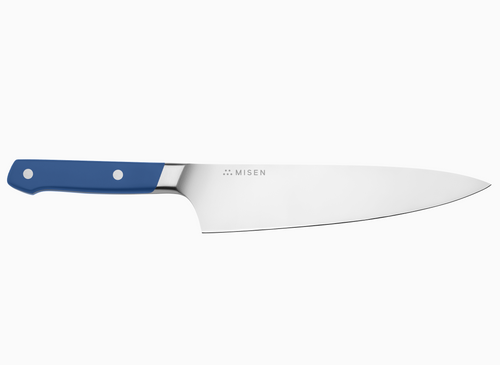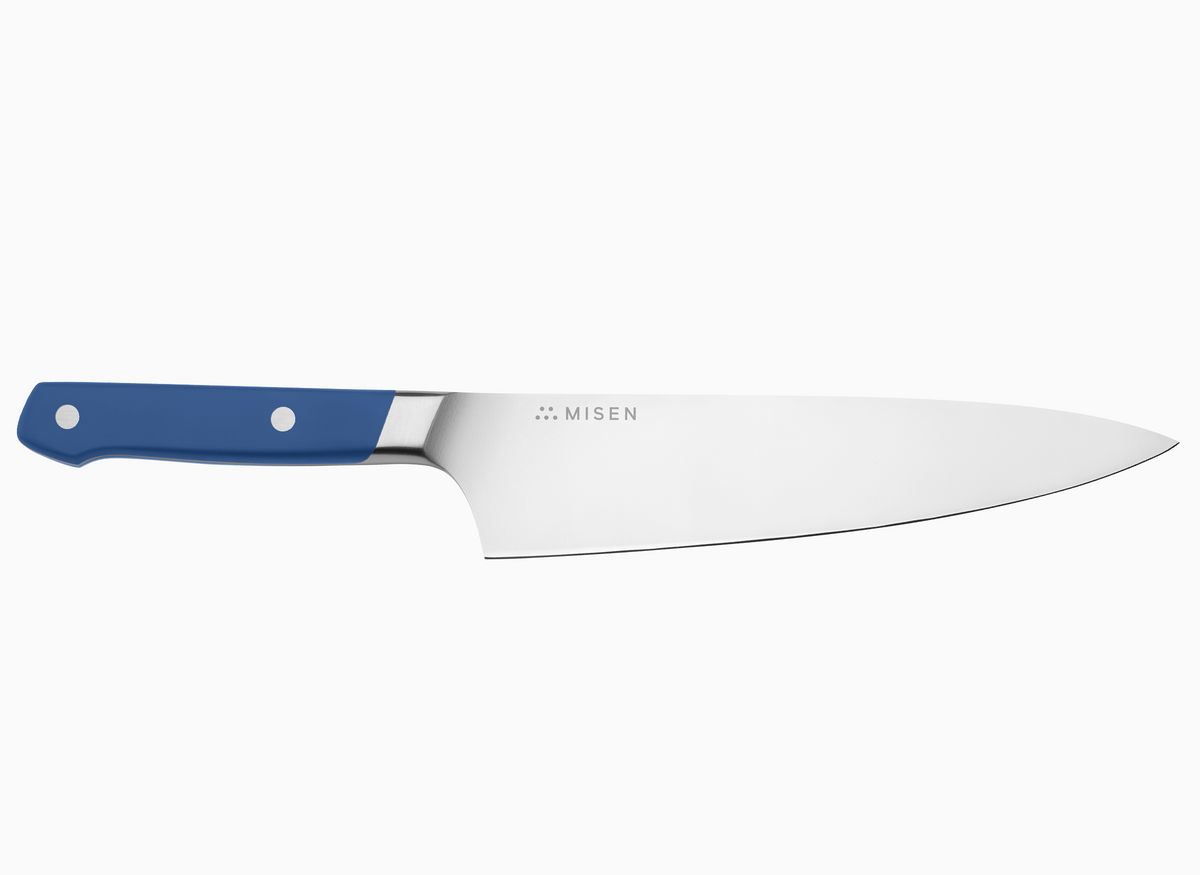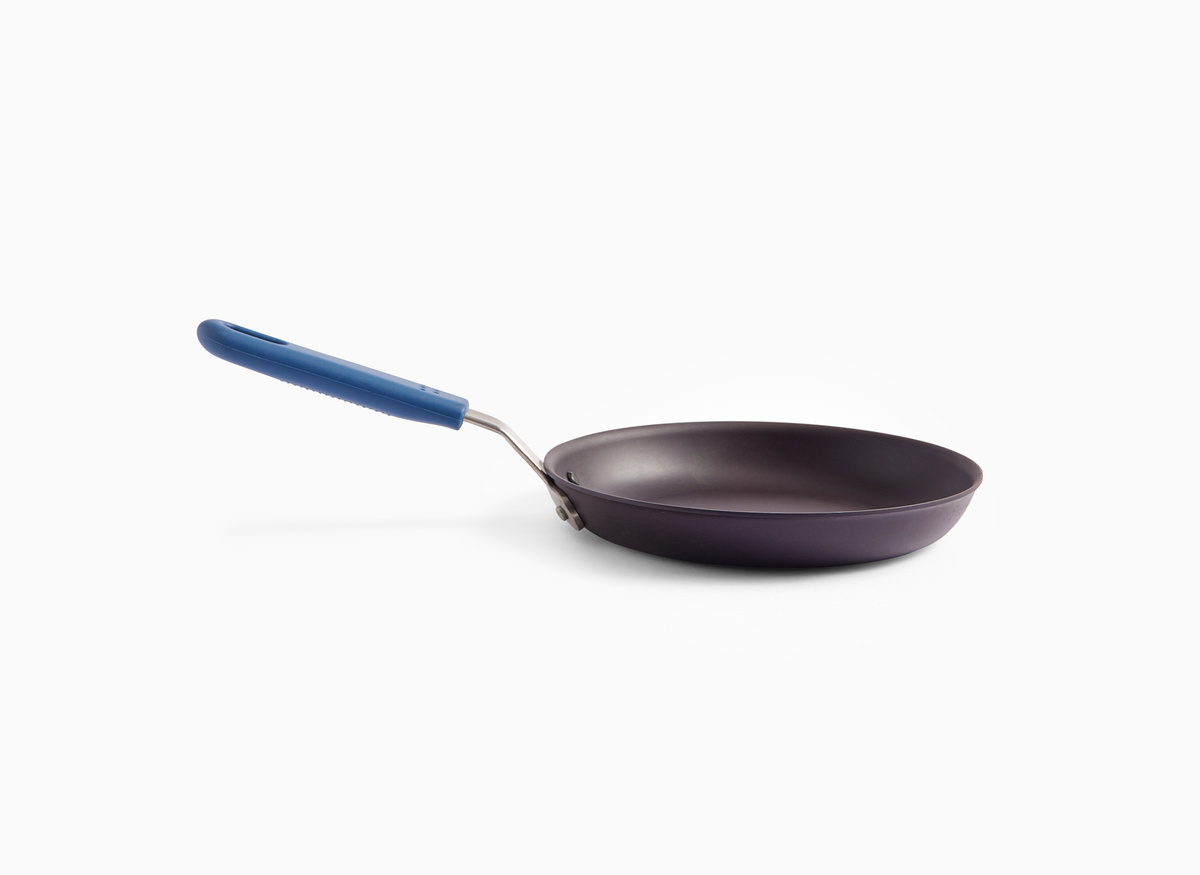Slice Off: The Best Steel for Knives
 Change an ingredient in a recipe and you change the outcome. The same is true with making steel for kitchen knives.
Change an ingredient in a recipe and you change the outcome. The same is true with making steel for kitchen knives.
- Chromium makes steel that can resist stains and corrosion.
- Carbon gives steel its strength.
- Oxygen, not water, is the enemy of steel.
Long before we learned to mine iron from the earth and create steel, our ancestors collected interstellar versions of iron that fell from the sky in the form of meteorites. King Tut was buried with a dagger created from what the Egyptians called biz-n-pt or “metal from heaven.”
We don’t have to look to the skies for steel today. Steel — a hybrid version of the same metal that makes up the infrastructure of skyscrapers and suspension bridges — is used to create kitchen knives.
It’s in the Mix
 Add carbon to iron ore and you’ve got steel.
Add carbon to iron ore and you’ve got steel.
All steel is essentially a combination of two main elements: iron and carbon. Pure iron is soft. When it’s heated — or forged — and mixed together, some of the carbon is absorbed by the iron, but the rest adds hardness to the blade. The more carbon, the harder the blade.
It’s the addition of other elements in small amounts that change steel’s characteristics. Two,in particular, make dramatic changes that are the most beneficial for kitchen knives.
- Carbon is already in the mix but adding more increases steel’s hardness. When you read about a knife made of high-carbon steel, the element makes up between 0.5% and 1.5% of the metal’s content.
- Chromium makes steel that’s resistant to corrosion, and it also increases wear resistance. Adding at least 10% chromium protects steel from rust, and only steel with chromium can be called “stainless.” Chromium combines with oxygen molecules to form a layer on the steel surface. It prevents the oxygen from interacting with the iron to create rust. Even though it’s microscopically thin, this chromium/oxygen layer is capable of replacing itself whenever the knife receives scratches or scrapes. Chromium content is the hero and the main reason behind stainless steel.
These two elements are key to the steel used in many quality cooking knives. Elevating chromium makes it more resistant to rust because of a thin layer – measured in molecules – of protective oxide that forms on the surface of the steel. Adding more carbon and reaching certain heat levels cause the steel and carbon atoms to reorder themselves and create additional hardness. Adding both is an excellent way to create a knife destined for a lifetime of favorable performance in your kitchen because it’ll be easier to use and care for.
The Rockwell Hardness Scale
Just like adding too much salt can ruin your stew, adding too much hardness can cause a knife blade to become brittle. It’s one of the reasons why super-brittle ceramic kitchen knives are falling out of favor. Breaking or shattering one can be as easy as accidentally dropping it.
Brittle is bad, but hardness is good. Steel’s hardness is measured using the Rockwell Hardness Scale (HRC). The scale and the test were invented in 1919 by Stanley P. Rockwell.
An industrial diamond — one of the hardest known substances — is used to make an indentation in the steel. The Rockwell hardness is calculated as the difference between the initial depth of the indentation and how much the material bounces back after the diamond is removed.
Blade hardness is often the characteristic used to distinguish between Japanese- and German-style knives. Japanese-style carbon steel knives are known for having a razor-sharp edge, but high hardness creates brittle blades that are easy to chip. Less brittle German-style knives may need to be sharpened more often, but they’re not as prone to damage.
Japanese-style knives tend to have an HRC rating of more than 60, while German-style knives have HRC ratings in the range of 55.
Hardness vs. Wear Resistance
A good kitchen knife is made of steel with sufficient hardness – mainly because of a higher carbon content – to stand up to the occasional battle with a watermelon or tough broccoli stems. Hardness won’t protect your knife blade from becoming dull. That type of protection is known as wear resistance.
Elements such as vanadium are added to iron and carbon because it promotes a more compact atomic structure, which knife manufacturers refer to as “grain structure.” The finer the grain, the more resistance a knife blade has to dullness. Wear resistance is achieved. A kitchen knife made of steel that has both qualities will stay sharper longer because the edge of the blade can resist wear caused by the constant contact of your chopping surface.
Popular Steel Used in Kitchen Knives
 The “recipe” for steel is called a specification.
The “recipe” for steel is called a specification.
There are thousands of “recipes” to make steel. Some of them vary by just hundredths of a percent of a single element. Many create what’s known as tool steel, an alloy or blend of elements that makes it resistant to deformation and abrasion.
Steel makers don’t actually call them recipes. The precise amounts of elements added to iron and carbon to create steel are known as “specifications.” The industry also has dispensed with creative naming and follows a number convention. Heat treatment and cooling add further complexity. Some of the most common “specifications” used in steel for knife making include:
- 4116 Krupp: Germany’s Thysen Krupp manufactures this stainless steel, and the specification is a trade secret. It has an HRC hardness rating of about 57 and features a balance between rust resistance, toughness, and good edge retention. High-end German knife makers such as Wüsthof and J.A. Henckels use this steel for their chef’s knives.
- AUS-8: This specification features higher amounts of carbon content and enough chromium to offer excellent corrosion resistance and protect against discoloration. It has an HRC of 58.
- S30V: It’s one of the most popular specifications of steel used in knife blades. Higher amounts of carbon and vanadium give it an HRC of at least 59-60.
- S35VN: This specification adds small quantities of the element niobium (the reason for the added “N”), which makes a finer grain structure.
- S90V: Besides a higher amount of carbon, this steel type specification features triple the amount of vanadium found in S30V steel. The trace element makes this high chromium steel more expensive, but few other specifications create a blade that will hold its edge or withstand abrasion as well. It’s HRC rating is about the same as S30V.
A cook might refuse to provide you with their recipe — just as Thysen Krupp keeps their steel specification a trade secret. Most knife makers offer information about the type of steel they use somewhere in their marketing material, but don’t expect to find it stamped on the blade.
This particular collection of specifications is sometimes referred to as “super steel,” which means that they are hard but not brittle, and they resist corrosion. Super steels have higher carbon content — so they are wear resistant — but they also offer the desired traits of superior edge retention and ease of sharpening.
High-carbon stainless steel contains iron, at least .55% carbon, and a minimum of 13% chromium by American cutlery standards. This chromium level can vary elsewhere in the world. According to the International Stainless Steel Forum stainless steel must contain at least 10.5% chromium as opposed to America's minimum of 10%.
What About Damascus Steel?
This type of steel has a high carbon content and is made by folding several types of steel to create a beautiful water-like pattern. Blades made of this high end steel are most often Japanese-style knives, meaning they are harder and sharper.
The entire blade might not actually be made of Damascus steel. They may instead be Damascus-clad, meaning that the blade is made of stainless steel and then coated with the aesthetically pleasing Damascus steel.
Stainless Steel: A Quick Bit of History
 The maker of the Swiss Army Knife, Victorinox, takes is name from the French word for “stainless.”
The maker of the Swiss Army Knife, Victorinox, takes is name from the French word for “stainless.”
We have a British metallurgist named Harry Brearly to thank for stainless steel, and his discovery had nothing to do with knives. Brearly was looking for ways to make a better gun barrel. In 1912, he discovered that steel with a layer of chromium resisted rust and corrosion.
Brearly introduced his steel and chromium mixture — which he called “rustless steel” — to a friend named Ernest Stuart, who was in the business of selling knife steel. Stuart had more of a marketing mind. He decided “stainless steel” had more of a ring to it.
Stuart brought this new steel and its corrosion-resistant powers to the attention of a company named Victoria, which made steel knives for the Swiss Army. Victoria immediately began to use the alloy for their knives, but the company preferred to call this new steel formulation “inox,” which is short for the French word “inoxydable” or “stainless.”
Shortly afterward, the company decided to incorporate the source of this excellent new steel into their name, and they rebranded themselves as Victorinox.
Stainless, Not Stain-Free
Stainless steel requires far less maintenance than other types of blade steel — especially non-stainless steel or a carbon steel specification that has less than 10% chromium. But stainless steel still needs care to keep it free from blemishes.
Stainless steel knives are corrosion resistant and difficult to discolor, but both corrosion and discoloration can still happen. If you see specks of rust on your stainless steel knife blade, you’re looking at what’s known as pit corrosion. It’s most common in stainless steel with a very high carbon content.
Remember that chromium creates a protective layer preventing corrosion on steel blades. If you see these small specks of rust, it likely means you’ve allowed the knife to remain wet. The chromium wasn’t able to come in contact with oxygen in the air.
Most pit corrosion can be removed with a soft cloth. Be prepared to clean and dry your knives immediately after use. Keep them out of the dishwasher, as the detergent is abrasive, and the blade is exposed to extreme humidity during the drying cycle.
Which Steel Is Best?
No single steel type or steel “recipe” results in a perfect kitchen knife. German-style knives are more durable but use softer steel with an HRC of around 57. Japanese-style knives traditionally have been manufactured with high-carbon steel and an HRC of at least 60, making them harder and keeping them shaper for longer periods of time. But they’re more prone to discoloration and corrosion.
Hard is good. It’s what gives a knife its edge holding power. Most steel specifications use 0.5% or more carbon to achieve the necessary hardness.
Misen knives are made with AUS-8 stainless steel from Japan. The carbon content is 0.8%, increasing the hardness but not to the point where brittleness occurs. The benefit is a knife that’s able to hold a sharp edge longer than others, but still able to resist corrosion and discoloration.
As far as recipes go, it’s got the right stuff to make the best knife.








